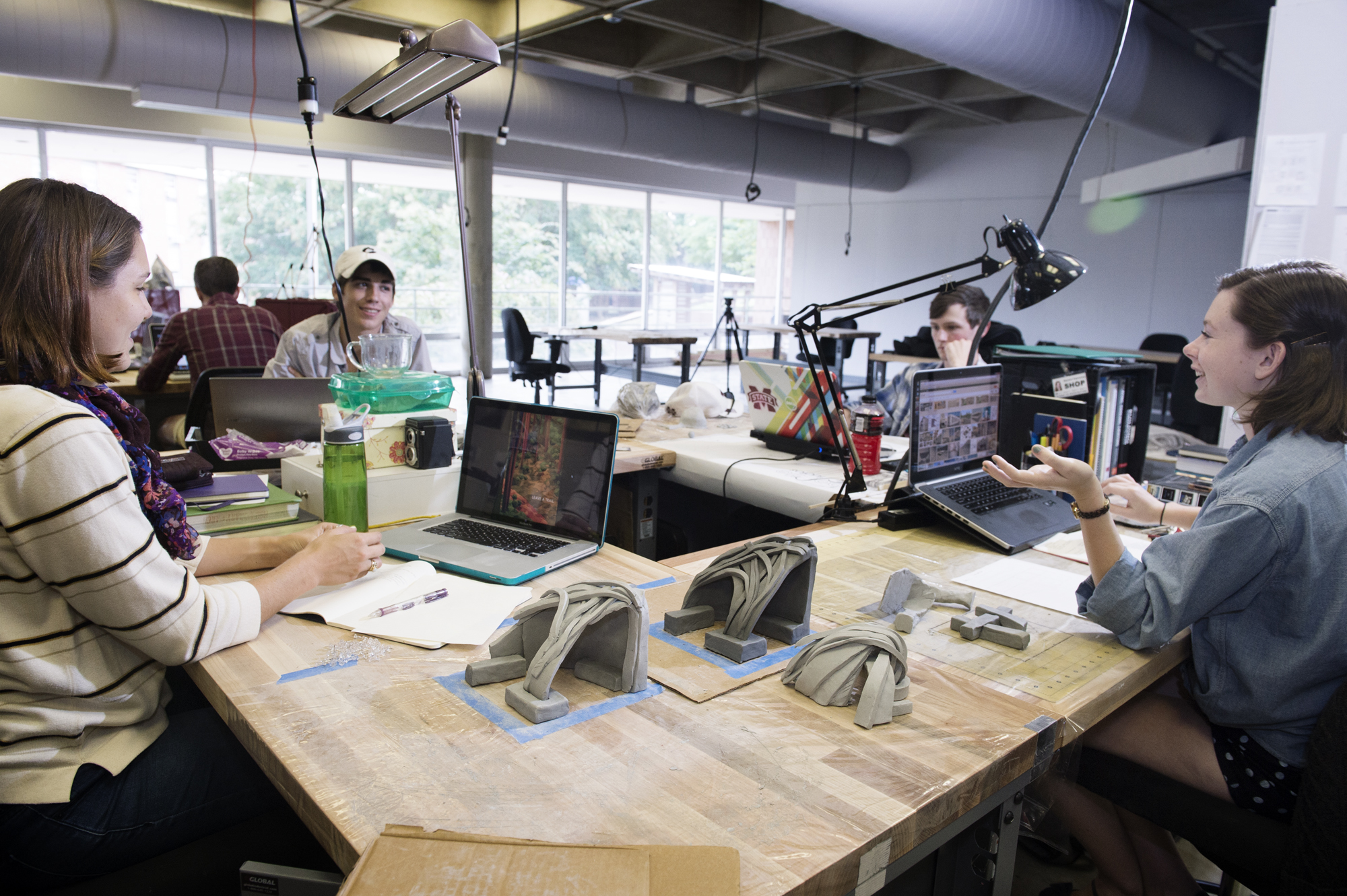Contact: Leah Barbour

Photo by: Megan Bean
STARKVILLE, Miss.--Mississippi State University's College of Architecture, Art and Design is offering a unique collaborative studio for architecture and building construction science majors.
"It's the only one of its kind in the country," said CAAD Dean Jim West. "The architecture students and the construction students are in the same studio with faculty from both groups team-teaching over two semesters."
The university course offers a special learning opportunity, and collaboration is key to the students' success, said Tom Leathem, BCS assistant professor.
While the nearly 50 students are working together in the classroom, they will construct two bus shelters for the Mississippi Band of Choctaw Indians in Neshoba County. The shelters will be delivered to Philadelphia at the semester's end.
"The students have to work together hand-in-hand the entire time," Leathem said. "The architecture students are being challenged with learning and executing architecture practices, and the BCS students have to be conscious of the impacts that they could make on the design when they're trying to execute their construction portion of the project."
Architecture assistant professor Hans Herrmann said the course offers the perfect opportunity to introduce architecture majors to fundamental building construction and design materials.
"The studio is very much focused on a non-traditional set of issues for beginning students," Herrmann explained. "Engaging in the study and practical application of the effects of building materials and methods at this level in their education is highly unusual."
By designing and building the bus shelters together, the students are learning how to make the compromises that will become an integral part of their professional careers, he said.
Several architecture majors said they initially thought the biggest challenge they will face will be to consider the construction aspects of their designs. Likewise, BCS majors anticipated their biggest struggle will be adherence to the design while realizing it with construction materials.
"Architecture and building construction science programs and students are just different," said sophomore Ryan M. Fierro, an architecture major from Madison, Ala. and the son of Mario and Sheila Fierro. "I know I'm going to leave this studio still having my design sense, but I'll understand how it will be affected and changed by the construction aspects."
Finding pragmatic ways to realize the designs will be a challenge, but gaining real-world experience is preparing the entire group for the workforce, said junior building construction science major Brent M. Gaude' of Natchez, the son of David and Ann Gaude'.
As the class began the project by sculpting clay models of the proposed shelters, differences between architectural and BCS mindsets were obvious, said sophomore Rashidat L. "Mo" Momoh, an architecture major and the daughter of Khadijat Momoh of Cordova, Tenn.
"After the first rounds of models were completed, you could easily tell which ones were done by architecture majors and which ones were done by building construction science majors," Momoh said. "Even though there was a distinction between the majors, neither was right.
"The architecture majors did not consider how their models would be made out of real-world building materials, and the building construction science majors did not consider how playful and inviting a bus stop should be," she said.
When the design phase was completed, both students and faculty members critiqued the models, and teams composed of both disciplines were asked to create new models. As the students discover how to learn from one another, they will be better prepared for the workforce, Herrmann said.
"The intent of our work this semester is to form a foundational understanding of integrated project delivery as a way of realizing buildings in the world," he said.